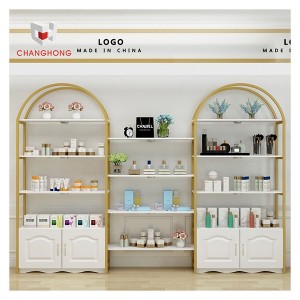ное. . 19, 2024 08:17 Back to list
Shop layout and design strategies for optimized retail performance
Shop Planning A Strategic Approach to Retail Success
In today's highly competitive retail landscape, effective shop planning is essential for businesses aiming to maximize their space, enhance customer experience, and ultimately boost sales. The process of shop planning encompasses various elements including layout design, inventory management, visual merchandising, and customer flow optimization. By leveraging strategic shop planning, retailers can create an inviting atmosphere that not only attracts customers but also encourages them to make purchases.
Understanding the Importance of Layout Design
One of the fundamental aspects of shop planning is layout design, which refers to the arrangement of products, fixtures, and pathways in a retail space. A well-thought-out layout can significantly influence customer behavior and the overall shopping experience. There are various types of layout designs, including grid, racetrack, and free-flow, each catering to different types of merchandise and customer demographics.
For instance, a grocery store may benefit from a grid layout, which facilitates easy navigation and allows customers to quickly locate items. Conversely, a boutique might utilize a free-flow layout to create a more relaxed and exploratory shopping environment. Retailers should consider their target audience and product categories when selecting a layout, ensuring it aligns with their brand identity and customer preferences.
Enhancing Customer Experience through Visual Merchandising
Visual merchandising is another critical component of shop planning that can greatly impact a retailer's success
. This involves the strategic presentation of products to engage customers and drive sales. Effective visual merchandising showcases products in a way that highlights their features and benefits while creating an aesthetically pleasing environment.Retailers can utilize various techniques, such as utilizing color schemes, lighting, props, and signage, to draw attention to key products and promote special offers. Seasonal displays, thematic merchandising, and interactive installations can also enhance the shopping experience, making it more memorable for customers.
By investing in visual merchandising, retailers can not only increase product visibility but also create emotional connections with their customers. An inspiring and well-structured display can often lead to impulse buys, resulting in increased sales and customer loyalty.
shop planning

Optimizing Inventory Management for Efficiency
Effective inventory management is crucial for shop planning, ensuring that the right products are available at the right time. Retailers must balance supply and demand, keeping track of sales trends and inventory levels to avoid overstocking or stockouts. A well-planned inventory system can streamline operations, reduce costs, and enhance the overall shopping experience.
Implementing inventory management technology, such as point-of-sale (POS) systems and inventory tracking software, can provide valuable insights into sales patterns, allowing retailers to make informed decisions regarding restocking and product placement. Additionally, having a clear understanding of customer preferences and seasonal trends can help retailers adjust their inventory accordingly, ensuring that they meet customer needs effectively.
Ensuring Smooth Customer Flow
Another crucial aspect of shop planning is managing customer flow within the retail space. A well-designed store layout should facilitate an easy and enjoyable shopping journey. This involves analyzing the paths customers are likely to take and strategically placing high-demand products to encourage exploration and impulse purchases.
Retailers should aim to minimize bottlenecks and obstacles that could disrupt the shopping experience. Clear signage, wide aisles, and a logical progression from one section to another can enhance customer flow. Furthermore, considering the placement of checkout counters and customer service areas is vital in ensuring a smooth and efficient shopping experience.
Conclusion
In conclusion, shop planning is a multifaceted process that plays a pivotal role in the success of retail businesses. By focusing on layout design, visual merchandising, inventory management, and customer flow optimization, retailers can create a welcoming environment that encourages shopping and brand loyalty. As the retail landscape continues to evolve, businesses that prioritize effective shop planning will be well-positioned to thrive in an ever-changing market, ultimately leading to increased sales and customer satisfaction.
-
The Impact of Display Racks on Promoting Sustainable Product Consumption
NewsMay.14,2025
-
The Display Table Is A Catalyst For Sustainable Consumer Engagement
NewsMay.14,2025
-
Sustainable Modern Retail Store Fixtures
NewsMay.14,2025
-
Store Design Innovations for Enhanced Customer Experience and Sales
NewsMay.14,2025
-
How Shoe Shop Displays Influence Sustainable Footwear Choices
NewsMay.14,2025
-
How Display Counter Aids in Efficient Resource Management in Communities
NewsMay.14,2025


















































































































